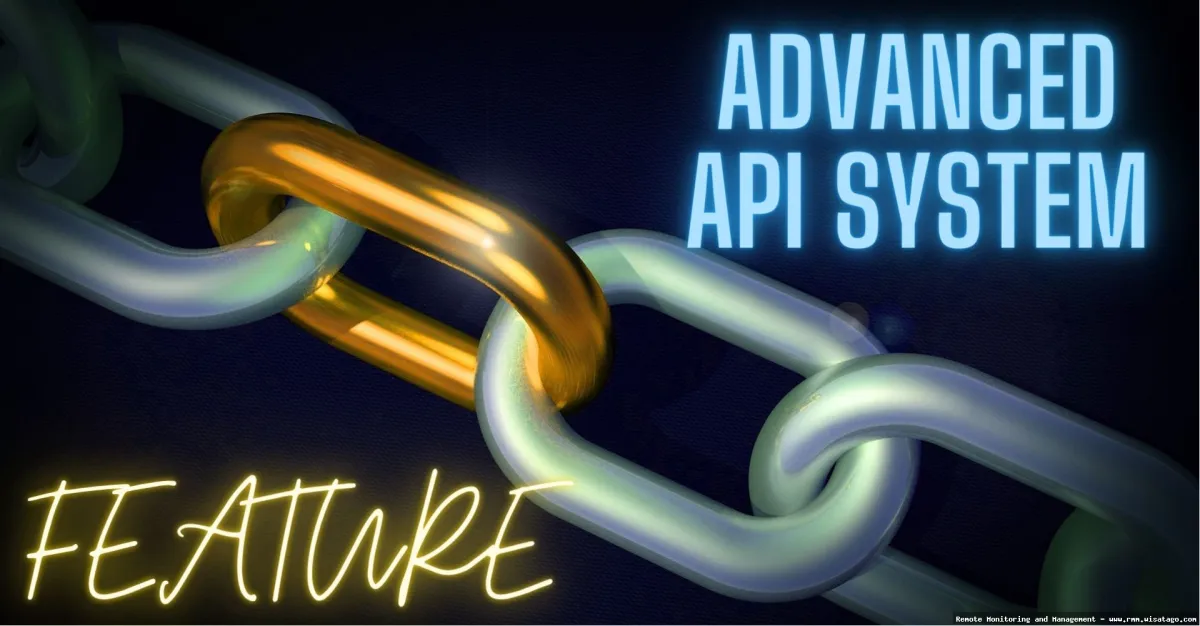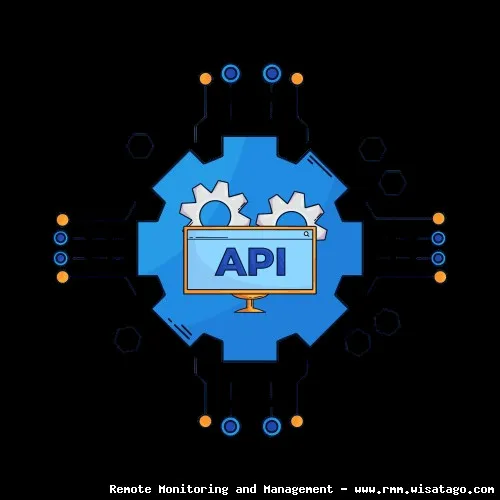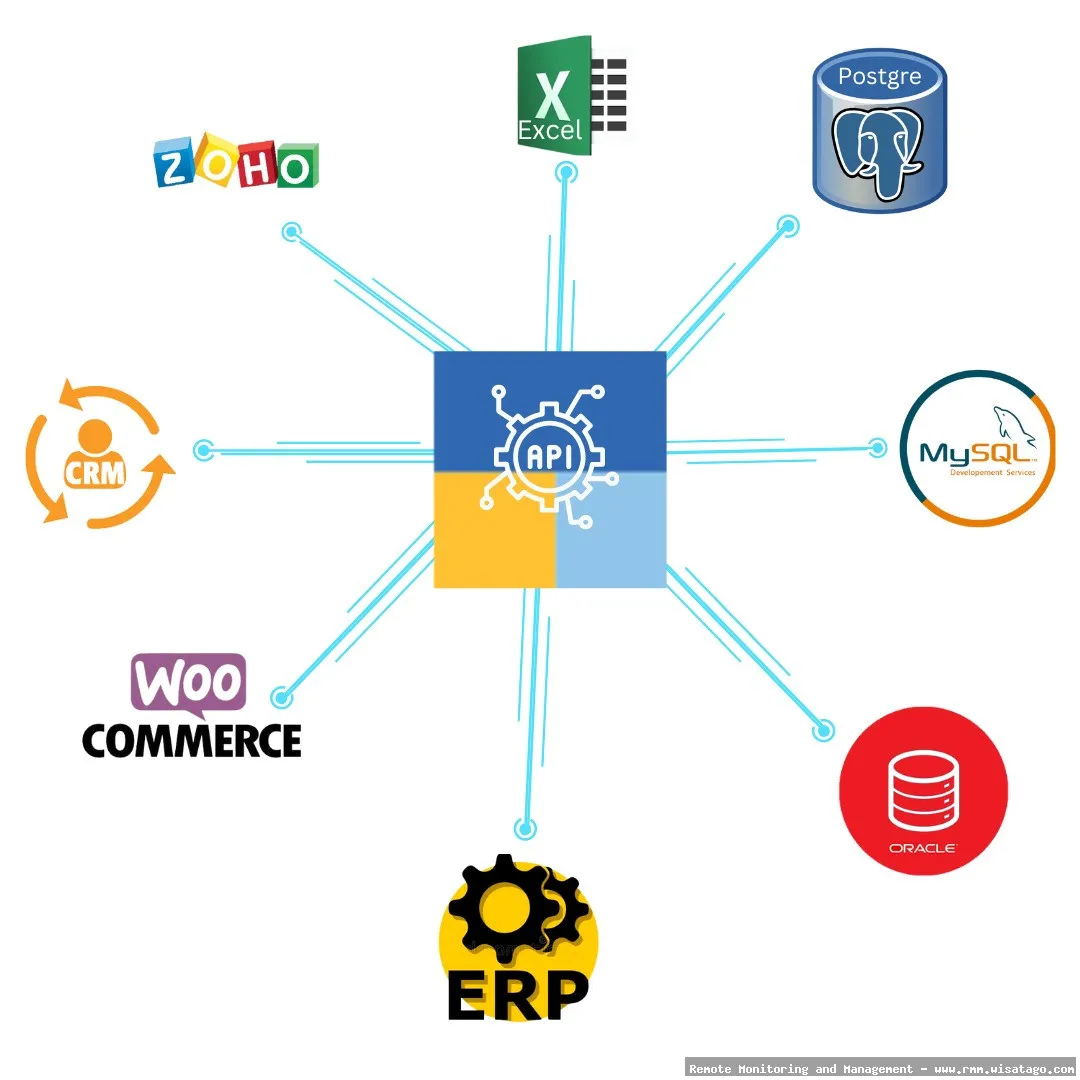In today’s complex IT landscape, Remote Monitoring and Management (RMM) platforms are no longer just nice-to-haves; they’re essential tools for MSPs and IT departments alike. The ability to proactively monitor systems, automate tasks, and remotely resolve issues is critical for maintaining uptime, ensuring security, and optimizing IT performance. However, the true power of an RMM platform is unlocked when it’s seamlessly integrated with other business-critical applications through advanced API integrations. This integration creates a unified ecosystem where data flows freely, processes are streamlined, and IT professionals can make data-driven decisions.
Think of your RMM as the central nervous system of your IT operations. It gathers data from all your endpoints, servers, and network devices. But without proper connections to other systems – like your ticketing system, CRM, or security tools – that data sits in a silo. Advanced API integration breaks down those silos, allowing you to correlate information, automate workflows, and gain a holistic view of your IT environment. This leads to improved efficiency, reduced costs, and enhanced security posture.

This article will delve into the world of advanced API integration for RMM platforms. We’ll explore the features, benefits, and details you need to know to leverage this powerful capability. Whether you’re an MSP looking to streamline your service delivery or an IT professional seeking to optimize your internal operations, understanding advanced API integration is crucial for maximizing the value of your RMM investment. We’ll cover everything from basic concepts to real-world use cases, providing you with a comprehensive guide to navigating this complex landscape.
Understanding the Basics of RMM and APIs
Before diving into the advanced stuff, let’s make sure we’re all on the same page regarding RMM platforms and APIs. An RMM platform, at its core, is a software solution that allows IT professionals to remotely monitor and manage their clients’ or their own IT infrastructure. This includes tasks such as:
- Endpoint Monitoring: Tracking the health and performance of workstations, servers, and mobile devices.
- Patch Management: Automating the deployment of software updates and security patches.
- Remote Access: Providing secure access to remote devices for troubleshooting and support.
- Alerting and Notifications: Generating alerts based on predefined thresholds and notifying IT staff of potential issues.
- Automation: Automating repetitive tasks to improve efficiency and reduce manual effort.
- Reporting: Providing insights into IT performance and security posture through detailed reports.
What is an API?
API stands for Application Programming Interface. Think of it as a digital bridge that allows different software applications to communicate with each other. An API defines the methods and data formats that applications can use to request services from each other. Instead of manually copying data from one system to another, APIs automate this process, making it faster, more reliable, and less prone to errors.
Why APIs are Essential for RMM Platforms
APIs are the lifeblood of a modern RMM platform. They enable the RMM to integrate with other tools in your IT ecosystem, creating a seamless and automated workflow. Without APIs, you’re stuck with a siloed RMM that requires manual data entry and coordination, negating many of the benefits of automation and efficiency.
Key Features of Advanced RMM API Integration
Advanced RMM API integration goes beyond basic data exchange. It involves sophisticated capabilities that enable complex workflows and deep integration with other systems. Here are some key features to look for:
Two-Way Data Synchronization
This feature allows for real-time synchronization of data between the RMM and other systems. For example, when a new ticket is created in your ticketing system, it can automatically be reflected in the RMM, and vice versa. This ensures that all systems have the most up-to-date information, eliminating data inconsistencies and reducing the risk of errors.
Customizable Workflows
Advanced API integration should allow you to create custom workflows that automate complex tasks. For example, you could create a workflow that automatically creates a ticket in your ticketing system when a server’s CPU utilization exceeds a certain threshold. You can further customize the workflow to automatically assign the ticket to a specific technician, based on the server’s location or the type of issue.
Event-Driven Automation
This feature allows you to trigger actions in other systems based on events that occur within the RMM. For instance, when a new device is discovered by the RMM, it can automatically create an asset record in your asset management system. This eliminates the need for manual data entry and ensures that your asset inventory is always up-to-date.
Secure Data Transmission
Security is paramount when it comes to API integration. Advanced RMM platforms use secure protocols, such as HTTPS and TLS, to encrypt data during transmission. They also implement robust authentication and authorization mechanisms to prevent unauthorized access to sensitive data.
Comprehensive API Documentation and Support
A well-documented API is crucial for successful integration. The RMM vendor should provide comprehensive documentation that clearly outlines the available API methods, data formats, and authentication procedures. They should also offer excellent support to help you troubleshoot any issues that may arise during the integration process.
Benefits of Advanced API Integration for RMM Platforms
The benefits of advanced API integration are far-reaching and can significantly impact your IT operations. Here are some of the key advantages:

Increased Efficiency and Automation
By automating tasks and streamlining workflows, API integration can significantly improve efficiency and reduce manual effort. This frees up your IT staff to focus on more strategic initiatives, such as proactive problem solving and innovation.
Improved Accuracy and Data Consistency
Automated data synchronization eliminates the risk of human error and ensures that all systems have the most up-to-date information. This leads to improved accuracy and data consistency, which is crucial for making informed decisions.
Enhanced Security Posture
By integrating your RMM with security tools, such as SIEM and threat intelligence platforms, you can gain a more comprehensive view of your security posture and proactively identify and respond to threats. Automated incident response workflows can also help you contain breaches and minimize damage.
Better Visibility and Reporting
API integration allows you to consolidate data from multiple sources into a single dashboard, providing you with a holistic view of your IT environment. This makes it easier to identify trends, track performance, and generate comprehensive reports.
Streamlined Service Delivery for MSPs
For MSPs, advanced API integration can streamline service delivery and improve customer satisfaction. By automating tasks such as ticket creation, patch management, and remote support, you can provide faster and more efficient service to your clients.
Real-World Use Cases of Advanced RMM API Integration
Let’s look at some specific examples of how advanced API integration can be used in real-world scenarios:
Integrating with Ticketing Systems
Integrating your RMM with your ticketing system allows you to automatically create tickets based on alerts generated by the RMM. For example, if a server’s disk space is running low, the RMM can automatically create a ticket in your ticketing system, assigning it to the appropriate technician. When the technician resolves the issue, the ticket status can be automatically updated in the RMM.
Integrating with CRM Systems
Integrating your RMM with your CRM system allows you to track IT performance metrics alongside customer data. This can help you identify trends, such as customers who are experiencing frequent IT issues, and proactively address their needs. You can also use this integration to automate tasks such as sending customer satisfaction surveys after a service request is resolved.
Integrating with Security Information and Event Management (SIEM) Systems
Integrating your RMM with your SIEM system allows you to correlate security events from multiple sources, providing you with a more comprehensive view of your security posture. For example, if the RMM detects a suspicious process running on a workstation, the SIEM system can analyze the event and determine if it’s part of a larger attack. This integration can help you identify and respond to security threats more quickly and effectively.
Integrating with Documentation Platforms
Integrating with documentation platforms like IT Glue or Hudu allows for automated updates to configurations and procedures. When a change is made in the RMM, the documentation platform is updated, keeping documentation current and accurate.
Challenges and Considerations for Implementation
While advanced API integration offers numerous benefits, it’s important to be aware of the challenges and considerations involved in implementing it:

Complexity and Technical Expertise
API integration can be complex and require technical expertise. You may need to hire a developer or consultant to help you with the integration process. Make sure your team has the necessary skills or consider external assistance. For more information, you can refer to RMM as an additional resource.
Security Risks
API integration can introduce security risks if not implemented properly. It’s crucial to use secure protocols and authentication mechanisms to protect sensitive data. Regularly review and update your security measures.
Maintenance and Updates
APIs are constantly evolving, so it’s important to keep your integrations up-to-date. You’ll need to monitor the API documentation for changes and update your integration accordingly. Plan for ongoing maintenance and updates.
Cost
API integration can be expensive, especially if you need to hire a developer or consultant. However, the long-term benefits of improved efficiency and automation can often outweigh the initial costs. Carefully evaluate the costs and benefits before making a decision.
Choosing the Right RMM Platform for Advanced API Integration
Not all RMM platforms are created equal when it comes to API integration. Here are some factors to consider when choosing an RMM platform for advanced API integration:
API Functionality and Documentation
Evaluate the RMM platform’s API functionality and documentation. Does it offer the features you need to integrate with your other systems? Is the documentation clear, comprehensive, and up-to-date?
Security Features
Ensure that the RMM platform offers robust security features, such as HTTPS and TLS encryption, authentication, and authorization. Look for platforms with security certifications and compliance standards.
Support and Training
Choose an RMM vendor that offers excellent support and training. They should be able to help you with the integration process and troubleshoot any issues that may arise.
Community and Ecosystem
A strong community and ecosystem can provide valuable resources and support. Look for RMM platforms with active user forums and third-party integrations.
Conclusion
Advanced API integration is a game-changer for RMM platforms. It unlocks the full potential of your RMM investment by enabling seamless integration with other business-critical applications. By automating tasks, streamlining workflows, and improving data visibility, API integration can significantly improve efficiency, reduce costs, and enhance security posture. While there are challenges and considerations involved in implementing API integration, the benefits are well worth the effort. By carefully evaluating your needs and choosing the right RMM platform, you can leverage advanced API integration to transform your IT operations and achieve your business goals. So, take the plunge, explore the possibilities, and unlock the power of integration!
Conclusion
In conclusion, advanced API integration represents a paradigm shift for RMM platforms, moving beyond basic functionality to unlock a wealth of possibilities. The ability to seamlessly connect with diverse systems, automate complex workflows, and gain deeper insights into IT environments is no longer a luxury, but a necessity for MSPs seeking to thrive in today’s competitive landscape. From enhanced security posture through threat intelligence feeds to streamlined service delivery via integrated ticketing systems, the benefits of a robust API integration strategy are undeniable.
This article has highlighted the key advantages and considerations for implementing advanced API integrations within your RMM platform. We encourage you to assess your current integration capabilities and identify areas where enhanced connectivity can drive greater efficiency and profitability. Explore the potential of leveraging APIs to build a more connected, automated, and intelligent IT management solution. Ready to take your RMM to the next level? Learn more about advanced API integration solutions and how they can transform your MSP practice by visiting www.example.com/api-integration.
Frequently Asked Questions (FAQ) about Advanced API Integration for RMM Platforms
What are the key benefits of using advanced API integration to connect my RMM platform with other business tools, and how can it improve efficiency for my MSP?
Advanced API integration offers numerous benefits for MSPs by connecting your RMM platform with other critical business tools like PSA systems, CRM platforms, and billing software. This integration automates data synchronization, eliminating manual data entry and reducing the risk of errors. For example, when a new device is onboarded in the RMM, the API can automatically create a corresponding asset record in the PSA. Improved efficiency stems from streamlined workflows, reduced administrative overhead, and faster response times to client issues. By centralizing data and automating tasks, MSPs can free up valuable time for technicians to focus on more strategic activities, such as proactive maintenance and security hardening. Furthermore, advanced integrations can provide real-time visibility into key performance indicators (KPIs) across different systems, enabling better decision-making and resource allocation.
What security considerations should I prioritize when implementing an advanced API integration for my RMM platform, and how do I ensure data privacy and compliance?
Security is paramount when implementing advanced API integration. Prioritize secure authentication methods, such as OAuth 2.0, to grant access to data without exposing sensitive credentials. Ensure that all API communication is encrypted using HTTPS to protect data in transit. Implement robust input validation and sanitization to prevent injection attacks. Regularly audit API access logs to detect and respond to suspicious activity. To ensure data privacy and compliance (e.g., HIPAA, GDPR), carefully review the data sharing agreements with all integrated platforms. Implement data masking or anonymization techniques where appropriate to protect sensitive information. Conduct regular security assessments and penetration testing to identify and address vulnerabilities. Furthermore, implement role-based access control (RBAC) to limit API access to only authorized users and applications. It’s also crucial to stay updated on the latest security best practices and API vulnerabilities.
What are some common challenges encountered when integrating an RMM platform with other systems using APIs, and how can I troubleshoot and resolve these integration issues effectively?
Several challenges can arise when integrating an RMM platform with other systems via APIs. Common issues include data mapping discrepancies between systems, rate limiting imposed by APIs, authentication failures, API version incompatibilities, and network connectivity problems. Troubleshooting begins with reviewing API documentation for both the RMM and the integrated system. Utilize API testing tools like Postman to send test requests and analyze responses. Monitor API error logs for detailed error messages and stack traces. Verify that authentication credentials are correct and that the API key has the necessary permissions. If facing rate limiting issues, implement exponential backoff or caching mechanisms to reduce API calls. For data mapping problems, carefully analyze the data structures in both systems and create appropriate transformation rules. If API versions are incompatible, consider upgrading or downgrading the integration to a compatible version. If problems persist, engage the support teams of both the RMM and the integrated system for assistance.